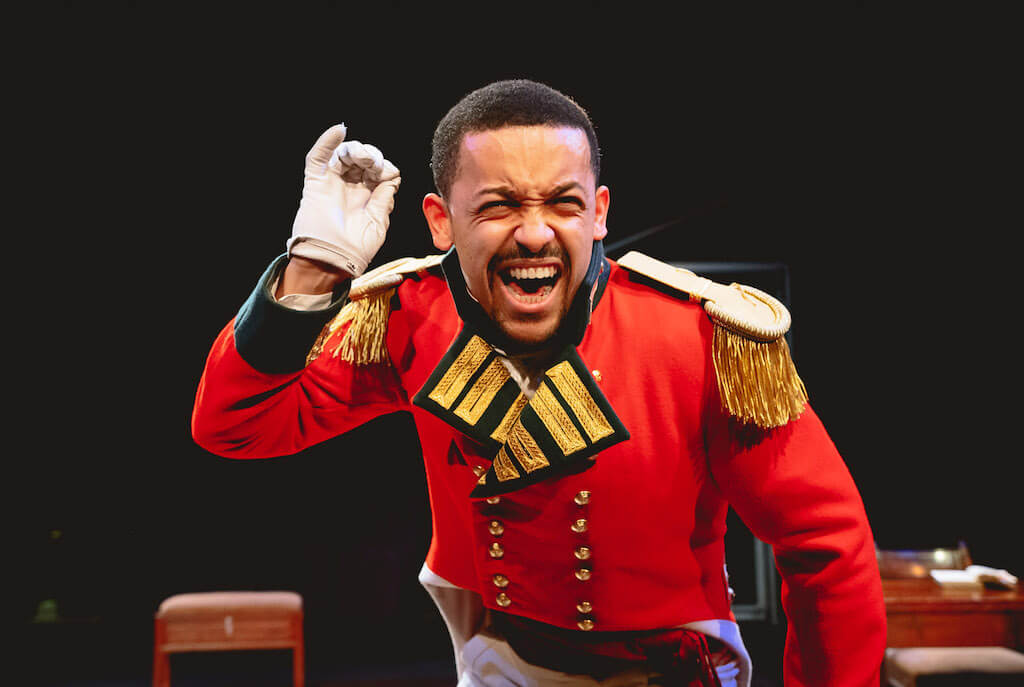Fonthill seems to set itself quite a challenge – to get the reader to like and root for a character who inherits obscene wealth, owns hundreds of slaves and a has a more than academic interest in pederasty. William Beckford, author of Vathek and creator of the impossible Fonthill Abbey was also driven out the country for his reported intrigue with titled schoolboy, William Courtenay.
Beckford is first introduced through his vaulting folly (and title of the book) Fonthill Abbey. A huge, impressive building of astonishing scale and whimsy, a gaudy but flimsy building whose central tower collapsed several times in building and finally in 1825, bringing down a large chunk of the building. In imagination and artificiality, there’s something very Disneyland about the place. The reader joins a group touring the building, ostensibly with an eye to buying it at an auction by Christie, though most of the party are just there to be nosy at a famous den of iniquity and vice.
There’s one surprising visitor, the scruffy and dirty Farquhar, an eccentric millionaire who Beckford visits. He listens to Farquhar’s story, of being a young man in India and they discover they share an interest in pubescent boys and activities they can enjoy with them either naked or in flimsy trousers. Beckford wants to sell Fonthill Abbey to Farquhar without the bother of the Christie auction because he recognises “the only man I’ve met as original as myself.”
Fonthill is a fascinating novel in how it makes its central theme of pederasty both a constant source of conversation whilst also dancing around it. Beckford’s current young lover is now approaching fifty, both his and Farquhar’s paramours are in the past. What’s more, it’s depicted as larky and victimless. Beckford’s own initiation as a teenage boy, under the tutelage of Alexander Cosins are held as treasured memories that belong to halcyon days. The bodies of young men/old boys are reduced to body parts and the sexual exploitation of them a pleasantly bloodless and aesthetic enjoyment.
What’s more, not only does pederasty in the book not harm any of the boys, it’s only of minor inconvenience to Beckford’s wife, Margie. She is introduced as an innonent, being schooled in the ways of men (and boy-loving men especially) by the Prince Regent’s mistress, Harriet. She is a wonderful character, wise in the ways of both world and court, with a frankness to be explicit. She encourages Margie to pity Beckford, declaring that men who love twelve-year-old boys do so because they themselves never grow beyond twelve. She instructs Margie on how to be a good beard and how to put up with being sexual second (or third, fourth, fifth) fiddle. Oddly, Margie is very successful at this and the two have a relationship that is surprisingly supportive and loving in everywhere but the bedroom.
Harriet’s appearance also allows for Prinny himself to make a few entrances in the story, both as Regent and as King. He’s depicted as rather stupid but proud of his cannyness, with Harriet’s main attraction to his spouting nonsense. Prinny says he’s excited about the plans for the Brighton Pavilion because the domes remind him of huge breasts - Beckford’s fondness for ludicrously large towers speaks for itself.
In fact, the only people that seem to be truly harmed by pederasty in this book are the poor, innocent pederasts themselves. A Chancellor with a spanking fetish known as Full Bottom finds himself removed from office, while Beckford has to run off to the continent (where he hung around with William Hamilton’s first wife, Catherine). It isn’t his sexual practises that prove his real undoing though, the abolition of slavery and the excesses of Fonthill do that - and then not the the extent that Beckford still owns two houses in Bath and builds another tower. The book also elides pederasty and homosexuality, with the case of the Vere Street Molly House and the gruesome end of some of its patrons.
Beckford himself is depicted to be rather charming, at least to those who aren’t his staff. He lives in a a partial ‘eastern’ fantasy where he is Vathek, Sultan of all. While Fonthill was gothic, a style that Beckford felt fit into the landscape better, his instincts are to imagine in baroque, orientalist fantasies. As such, the character in the book is always a twelve-year-old-boy inside, winning in his whimsy and eager to share his fantasies with those around him. The book also claims a deep innocence, which is winning in the fictional character but hard to reconcile with the real man.
The book contains a number of claims which seem libellous but having not read a biography of Beckford, it became a game of guessing which claims were likely true and which were not. Were there really rumours that his first child was the result of his wife and underage boy-lover having their own relationship - or that the second was a result in a three-in-a-bed romp? It then ends bathetically with the Fonthill tower falling down and Beckford erecting another.
The book is titled Fonthill: A Comedy by Aubrey Menen, but it’s hard to decide whether the book is really a comedy or not. It’s certainly not laugh-out-loud funny yet neither does the book adopt a tragic tone. I suppose it’s intended in the more abstract notion of a human comedy, a squint-eyed look at the terrible scrapes us humans get in through the strange curlicues of our own brains and desires.










